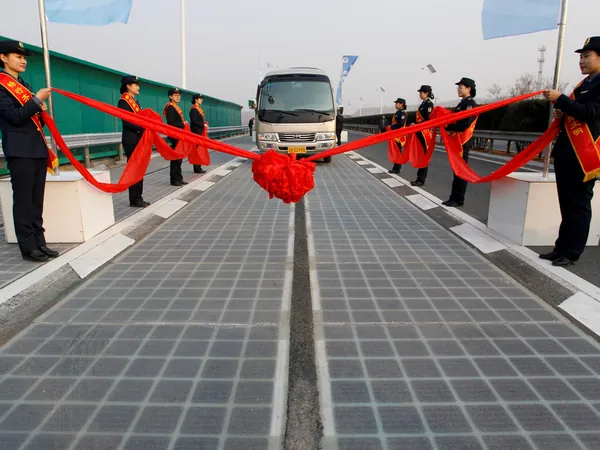
China: The Clean Energy Titan with a CO2 Shadow, Warns Ember Report
2025-09-09
Author: William
China finds itself at the heart of a global clean energy transformation, yet paradoxically remains a significant contributor to carbon dioxide pollution, according to a groundbreaking report from the London-based think tank Ember.
The report highlights that China’s ambitious state-led investments in clean energy are crucial for the world’s decarbonization pace. It emphasizes a shift in China’s development strategy, moving away from fossil fuels in favor of establishing an 'ecological civilization' aimed at achieving economic, social, and environmental balance—an initiative ingrained in its Constitution since 2018.
China's Dominance in Renewable Energy Production
Remarkably, China manufactures 60% of the world's wind turbines and an astounding 80% of solar panels, thus significantly lowering costs globally. Sam Butler-Sloss from Ember pointed out that since 2010, solar module prices have plummeted by over 90%, with China responsible for three quarters of solar manufacturing during this period.
Currently, solar modules are priced at under 10 cents per watt, while battery costs have dropped to below $70 per kilowatt-hour. Such advancements are poised to revolutionize energy economics worldwide.
A Dual Strategy: Economic Security Meets Green Innovation
China's approach is not solely driven by environmental aspirations but also by pressing economic needs. With its vast manufacturing industry heavily reliant on energy imports, the country aims to enhance its competitiveness and energy independence. This has fostered a burgeoning domestic market for electric technologies and significantly widened its patenting gap on the global stage—from 5% to a whopping 75% of global energy patent applications.
Global Investments and Expanding Influence
As a result of its investments, China is carving out a central role in global supply chains. Today, its manufacturing capabilities in solar and battery technologies exceed global demand. Butler-Sloss argues that unlike previous overinvestments in real estate that harmed its financial system, investments in renewable technologies are poised for successful export.
Last year, China poured a staggering $625 billion into renewable energy, nearly a third of the global total, outpacing Europe’s $426 billion and the US’s $409 billion. This aggressive investment strategy translated into a robust expansion of China’s clean energy sector.
The CO2 Conundrum: Progress Amidst Emissions Growth
Despite its advancements in renewable energy, China has yet to curb its greenhouse gas emissions, the primary goal of this energy transition. The International Energy Agency warns that emissions in China and India played a pivotal role in pushing global CO2 levels to a record 37.8 gigatonnes, with China accounting for nearly one-third.
Consequently, while the U.S. and Europe have witnessed decreasing emissions since the early 2000s, China’s footprint remains alarmingly large despite its green initiatives.
A Delicate Balance: Opportunities and Challenges Ahead
As the world watches, the implications of China’s energy and environmental policies will resonate globally. Ember's report poses vital questions about international collaboration on climate goals. If it weren’t for China's original investments, would other regions have ramped up their commitments? As Richard Black, editor of the report, speculates, perhaps not as vigorously.
Thus, while China strides forward with its clean energy revolution, it walks a tightrope between fostering innovation and combating pollution, raising pressing questions about the future trajectory of global environmental health.









 Brasil (PT)
Brasil (PT)
 Canada (EN)
Canada (EN)
 Chile (ES)
Chile (ES)
 Česko (CS)
Česko (CS)
 대한민국 (KO)
대한민국 (KO)
 España (ES)
España (ES)
 France (FR)
France (FR)
 Hong Kong (EN)
Hong Kong (EN)
 Italia (IT)
Italia (IT)
 日本 (JA)
日本 (JA)
 Magyarország (HU)
Magyarország (HU)
 Norge (NO)
Norge (NO)
 Polska (PL)
Polska (PL)
 Schweiz (DE)
Schweiz (DE)
 Singapore (EN)
Singapore (EN)
 Sverige (SV)
Sverige (SV)
 Suomi (FI)
Suomi (FI)
 Türkiye (TR)
Türkiye (TR)
 الإمارات العربية المتحدة (AR)
الإمارات العربية المتحدة (AR)